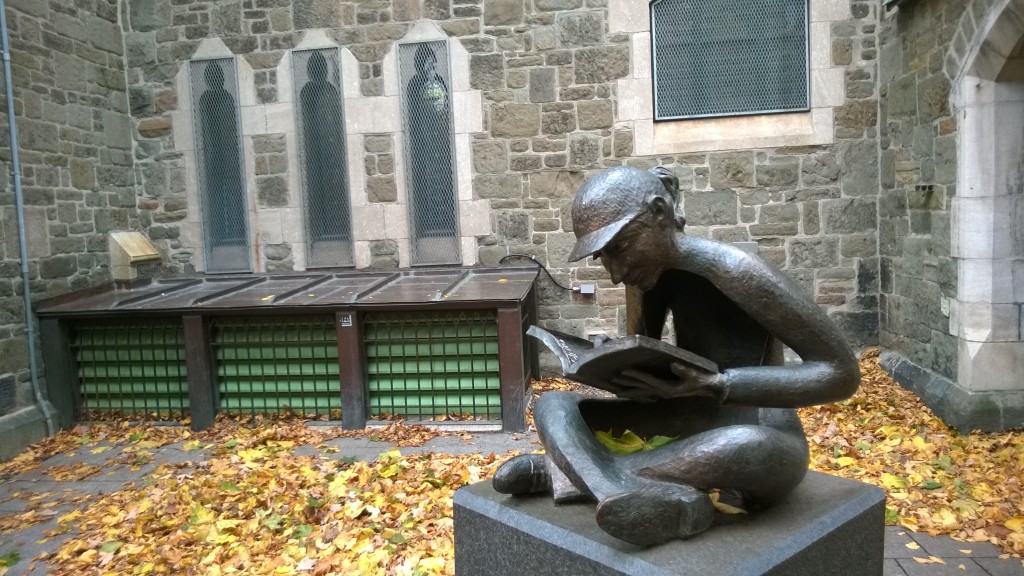By Doug Ward
Learning is a partnership, I tell students. As an instructor, I do my best to provide interesting and relevant material, use class time wisely, and grade student work fairly. I also make time in and out of class to help students better understand material they struggle with.
I can do only so much, though, I explain, and I certainly can’t make students learn. Learning takes place only when students engage themselves in their education, complete their work meaningfully, come to class prepared, and participate in discussions and projects.
It sounds simple, but it’s not, as a new study on undergraduate engagement makes abundantly clear.
The study, A Fresh Look at Student Engagement, surveyed freshmen and seniors on such things as higher-order learning, collaborative learning, student-faculty interaction and the supportiveness of their campus. In the foreword to the report, Paul E. Lingenfelter, former president of the State Higher Education Executive Officers Association, sums up the challenges well: “An authentic postsecondary education is more than simply acquiring knowledge; it must produce a sophisticated ability to use knowledge creatively to solve problems and add value.” (5)
That ability starts with engagement, and the report shows that those of us in higher education have lots of work to do on that front. Here are a few of the findings:
Collaborative learning
Only about a third of students reported engaging in collaborative learning, which was defined as working with other students on projects and assignments, explaining course material to others, or preparing for exams together. Those in engineering and biology reported the highest levels of collaborative learning; those in the arts, humanities, social sciences and social services reported the lowest levels.
Study time
Freshmen reported spending an average of 14 hours a week preparing for classes; seniors, 15 hours. Students taking all their courses online reported spending about an hour more studying each week. Seniors in engineering spent the most time studying (19 hours); those in communications, media and public relations, the least (12 hours).
Time spent reading
Students in online courses spent more time reading (eight hours a week for both freshmen and seniors) than students in traditional courses (six hours for freshmen, seven hours for seniors). A third of students reported doing no reading for class.
Amount of writing
Students in online courses did far more writing (59 pages a semester for freshmen, 107 for seniors) than students in traditional classes (45 pages for freshmen, 75 pages for seniors). Not surprisingly, the more reading and writing a course required, the more students perceived that they increased their ability to think in complex and critical ways.
Learning strategies
Students who used such learning strategies as identifying key elements of reading assignments, reviewing notes after class and summarizing what they had learned from a course generally reported higher grades than those who didn’t.
Effective teaching
Only about 40 percent of students at research universities reported that their instructors used effective teaching practices. The study defined those practices as having clear goals and organization, using clear examples to explain difficult concepts, and giving prompt and detailed feedback on assignments. Those in liberal arts reported the highest percentages of effective teaching; those in engineering, science and technology the lowest.
Interaction with faculty
Only about 20 percent of freshmen and seniors at large universities (those with more than 10,000 students) reported having meaningful interactions with faculty members. This included activities such as talking about career plans, meeting with faculty members outside class, and discussing academic performance.
Supportive environment
Older students, veterans and transfer students were less likely to find the campus environment supportive than other students were. Students who lived off-campus were less likely to describe campus as supportive than students who lived on campus were.
Online engagement
Students in online-only courses reported a higher level of interaction with instructors, advisers, student services staff members and administrators than students in traditional classes did. At the same time, they reported low levels of collaborative learning and were less likely to find the class environment supportive than those in face-to-face classes.
Use of technology
Students said courses that used technology for learning and that helped them understand the use of technology improved engagement and higher-order learning.
Adjustments to teaching
Assistant professors and lecturers were far more likely than associate and full professors to use course evaluations to improve their courses and their teaching.
High–impact practices
This was the umbrella term the survey used to describe such things as learning communities, study abroad, internships, service learning and research with faculty members. Eighty-four percent of seniors reported engaging in at least one of these activities and 60 percent reported two or more. Fifty-eight percent of freshmen reported engaging in at least one, and 12 percent said they had done two. For seniors at research universities, the most common activity was an internship (53 percent), followed by service learning (52 percent). For freshmen, the most common activity was service learning (46 percent).
Student jobs and activities
Seniors at research universities averaged 14 hours a week working for pay, 12 hours relaxing and socializing, 5 hours participating in extracurricular activities, 5 hours commuting (including walking and driving to campus), 4 hours caring for dependents, and 3 hours doing community service.
The study was conducted by the National Survey of Student Engagement, an organization that focuses on undergraduate learning. Dan Bernstein, director of the Center for Teaching Excellence at KU, serves on the organization’s advisory board.
This year’s survey involved more than 1.6 million students at more than 600 colleges and universities. Unfortunately, KU was not among them.
I’d highly recommend looking more closely at the report, which provides a rich snapshot of student and faculty perceptions of higher education. Most certainly, the survey highlights many encouraging aspects of student engagement. As I said, though, we all have a ways to go.
Doug Ward is an associate professor of journalism and a fellow at the Center for Teaching Excellence. You can follow him on Twitter @kuediting.





Recent Comments